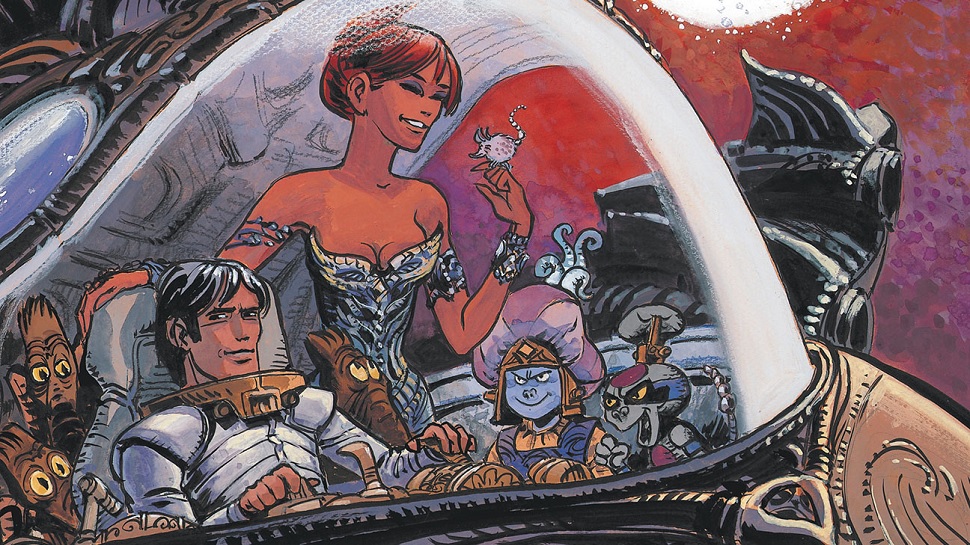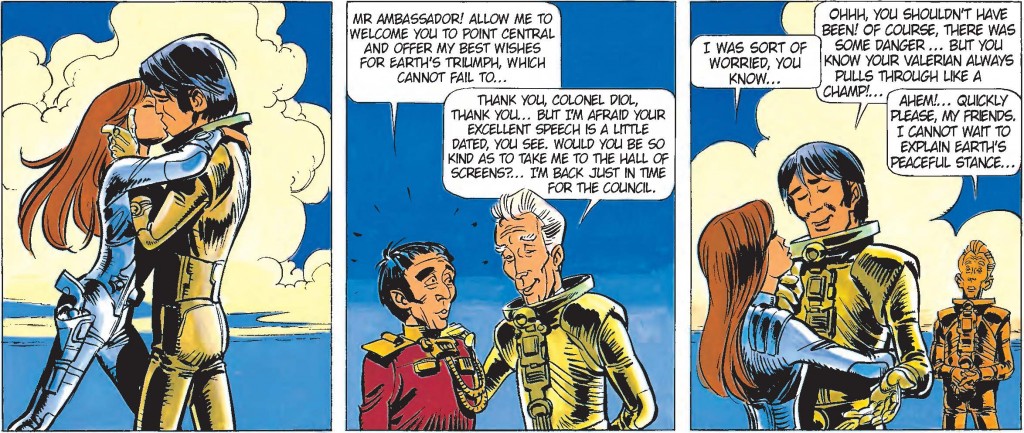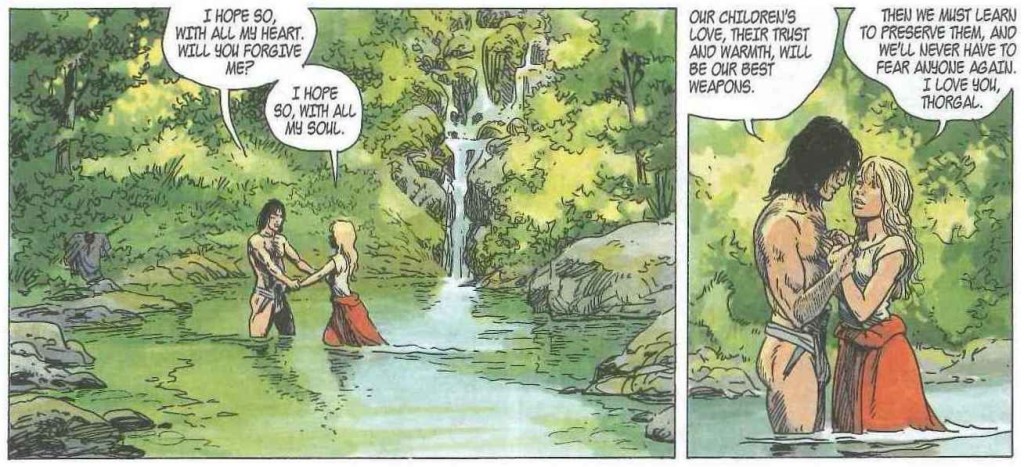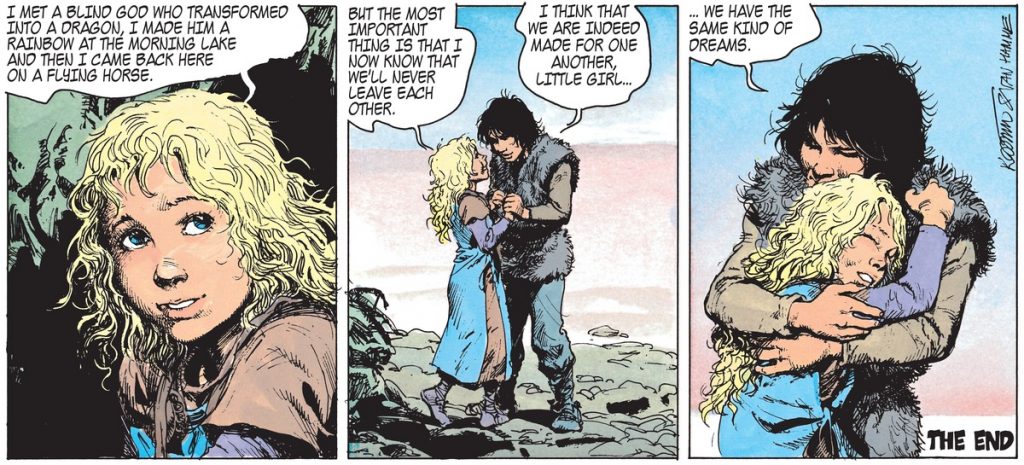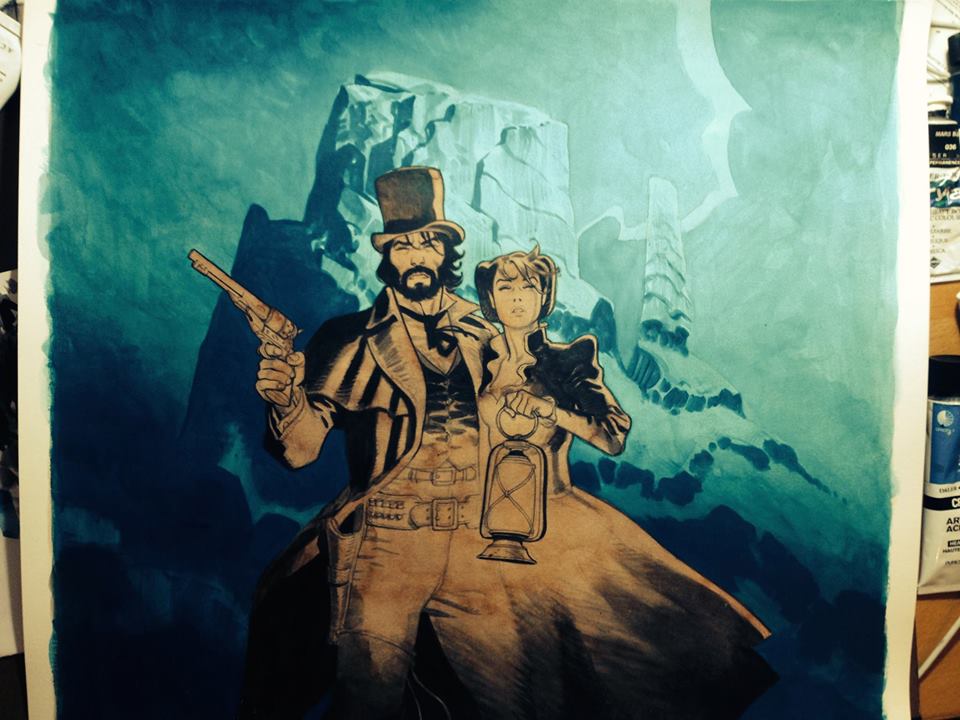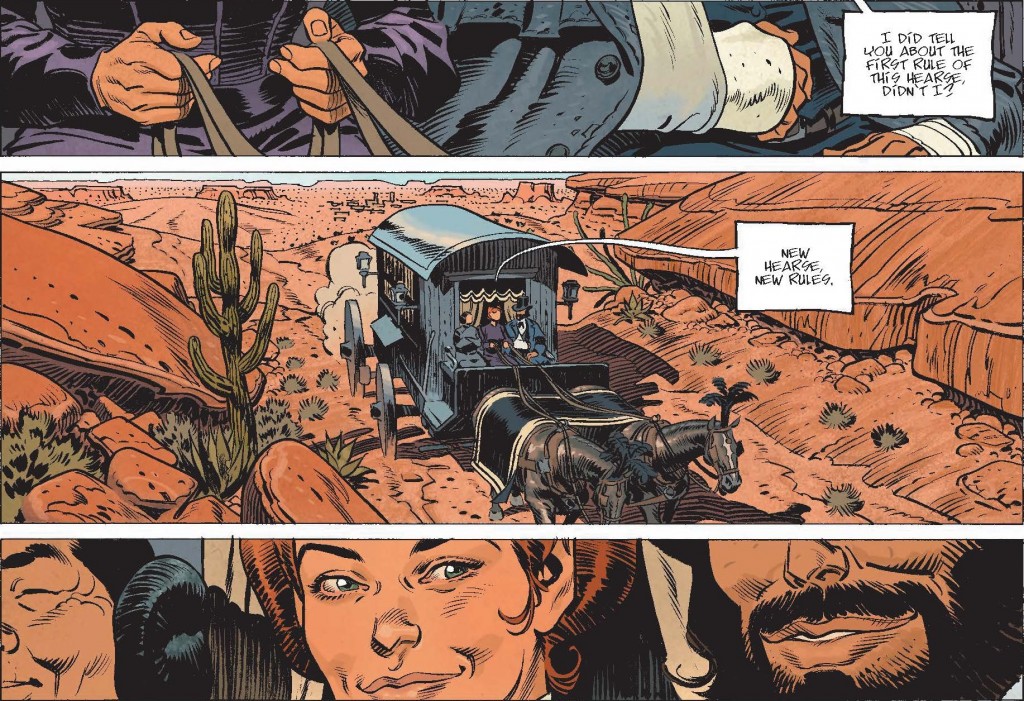Let’s talk about love. Those age-old words whispered into intimate darkness, or carefully penned at the end of a 16-page letter. Whatever may be the different forms of expression, it is essentially the same old story every time, and yet we never tire of hearing about it. It fascinates and reassures. It is the complex yet fundamental basis of human existence. But the best love stories are the ones where it’s not too easy; the ones with tension, disputes, and obstacles.
Maybe this is what turns love into legend.
It’s time to take a look at three of the most-celebrated couples of Franco-Belgian comics and work out what it is that makes them so… loveable!
Valerian and Laureline: Teamwork that makes the dream work
This gorgeous pair of space agents caused quite a splash when Valerian first appeared in the pages of Pilote magazine in 1967. Why? Because they were considered the first ‘illegitimate’ couple in Franco-Belgian comic books: they weren’t married. What’s more, this is no conventional happily-ever-after comic book couple; they fight, they see other people, they get back together, they smooch. They’re normal, basically.
Valerian was born in the 28th century in Galaxity, the capital of the Terran Galactic Empire. He’s trained as a spatio-temporal agent, protecting the empire’s planets from rogue forces. He’s conditioned to obey, even when his orders contradict his moral intuition.
Laureline is a peasant girl from the 11th-century French countryside. She and Valerian meet in the first book, Bad Dreams (Les Mauvais rêves, 1967, Pilote magazine, 1983, full album by Dargaud, 2017, English publication, Cinebook) when she gets him out of a tight spot in an enchanted forest. When Laureline discovers that Valerian is a time-traveler, he has no choice but to take her back to Galaxity with him, where she is also integrated into the spatio-temporal service. She’s then assigned as Valerian’s partner; from now on, they’re a team. It’s not long before their love affair blossoms, with their first steamy kiss in The Empire of a Thousand Planets (L’Empire des mille planets, 1969, Pilote magazine, 1971, full album by Dargaud, 2011, English publication, Cinebook).
Laureline tends to take a back seat in the early adventures, while Valerian does all the leg work. In fact, she was originally supposed to feature only in the first volume of the series, but authors Pierre Christin and Jean-Claude Mézières decided to keep her on and give her a little (actually, a lot) more gumption. A wise choice indeed, at a time when the feminist movement was rapidly gaining momentum, and most female comic book characters were brainless bimbos and damsels in distress.
When Entertainment Weekly asked director Luc Besson what attracted him to the comic book that he has now adapted into a blockbuster movie (in cinemas July 2017 – don’t miss it!), he replied: “It was a guy and a girl, and there weren’t many female heroines at the time… And Laureline doesn’t say ‘Yes, yes, yes’ to Valerian all the time. I loved that about her.”
Indeed, it would be fair to say that Laureline is more or less the polar opposite of Valerian. Her strong ethical principles and rebellious nature act as a counterbalance to Valerian’s unwavering loyalty to the galactic authorities. And thank goodness!
The series is considered a landmark in European comics and pop culture for its resounding humanism, which is manifest first and foremost in a couple structure ahead of its time. Even though their differences are the cause of much conflict, this is one of the first comic book couples that represents a collaboration, rather than a dependency; hero-hero, rather than hero-victim.
As Besson points out, this is a story about these charismatic partners, above all else: “What’s important is that they are a team.”
Thorgal and Aaricia: Love conquers all
Now here’s a couple that knows the meaning of “it’s complicated.”
Thorgal is a pariah, whose mysterious origins provoke much suspicion amongst a Viking clan unused to foreigners. He was adopted as a child by the then-chief, and expelled from the clan when his benefactor died. Aaricia is the clan’s beautiful young princess. Given their different social-cultural backgrounds, it was never going to be easy for the young lovers. They have to fight against the prejudice of the other Vikings, and the ancient traditions that promise Aaricia, as the tribe’s princess, to someone of high rank. In the end, their love wins out, and Aaricia agrees to leave her home with Thorgal and start afresh.
However, as the saying goes, happy endings are just stories that haven’t finished yet. And authors Jean Van Hamme and Grzegorz Rosiński do know how to weave a good yarn. Sure enough, the couple go on to suffer several long separations, a child with supernatural powers attracting unwanted attention, a house fire, massacres, memory loss, kidnappings of various family members, banishment, enslavement… not to mention Thorgal’s weakness for the smoldering adventuress Kriss de Valnor.
Why is this couple indestructible in spite of everything?
Rather like Laureline for Valerian, the young Aaricia starts out as something of a savior for Thorgal, protecting him from the petty schemes of her father and brother. It’s thanks to Aaricia that Thorgal is integrated into the clan and allowed to train as a Viking warrior. She is Thorgal’s ally from the start, and perhaps the only mortal to truly accept him, despite his differences.
Theirs is a slow-burning love, rather than a steamy, love-at-first-sight kind of romance. Since they met as children with a 6-year age gap, their early relationship was one of sibling affection, which transforms into deep-seated love as adults. Because they have never known life without each other, not being in each other’s lives is unthinkable.
Aaricia’s loyalty to Thorgal seems unshakeable. She is the cement of the couple. Neither of them has an easy time of it, but she sacrifices a lot more than her errant lover, even adopting Thorgal’s child by another woman (Kriss de Valnor). Still, her resolve rarely weakens in the face of all the adversity that befalls her due to their union.
Thorgal is a nomad as much as Aaricia is a nest maker. He’s an adventurer who chooses to live on the margins of society. He could lose himself completely, and it’s only thanks to Aaricia that he remains bound to the world of men. She is his one and only constant, and, despite his errant nature, he needs her. This becomes quite clear in Beyond the Shadows (Au-delà des ombres, 1983, Le Lombard, 2008, English publication, Cinebook). Thinking that his wife is dead, Thorgal plunges into a deep depression. He is a wreck, and ends up begging for scraps to survive. He finally gets it together a year later, when he finds out that his wife is still alive, but he has to go on a terrible journey to the kingdom of shadows to save her. In fact, we could say that they save each other: the knowledge that Aaricia is alive gives Thorgal the strength to live again.
So, in the end, love overcomes all obstacles. Sure, they might be cheating a little, since they were bound together by divine intervention at Aaricia’s birth, but, Odin knows, they could use all the help they can get!
Jonas Crow and Rose Prairie: Against their better judgement
Jonas Crow (otherwise known as “The Undertaker”) is an amoral anti-hero with florid vocabulary. Rose Prairie (otherwise known as “Saint Rose”) is a puritanical English housekeeper with a penchant for measuring table settings. Crow for death, Rose for beauty. Yet another duo of opposites.
This unlikely pairing was created by the strange circumstances of the death of Rose’s employer, Joe Cusco. Crow (Cusco’s undertaker) wants what he’s owed, and Rose is honor-bound to stick by him to ensure that Cusco’s sordid dying wishes are carried out. They’re tied to each other, against their will, by the strength of their determination to achieve their respective ends.
The friction is palpable as our two protagonists enter a battle of wills, one moral and one mercenary. But this is a series about the appearances and contrasts that each hero/anti-hero represents. And, as we all know, appearances can be deceiving. Jonas Crow might seem like a brute, and he certainly knows how to handle a gun, but beneath his rough façade, he’s got a good heart… and a soft spot for dumb vultures. As for Rose, behind her rigid principles is a woman who’s suffered greatly, and yet whose high-mindedness and faith in the good of mankind remains unshaken.
Both characters have much more to them than meets the eye, and it’s through the revelation of their respective pasts and their darkest impulses (yes, the saintly Rose does have a few) that they come to understand each other. As artist Ralph Meyer says, “All we are is the story of our suffering.” Slowly but surely their affection grows, as they each expose their personal tragedies, and as Rose realizes that Crow is willing to put his life on the line for her sake.
By the end of The Dance of the Vultures (La Danse des Vautours, 2015, Dargaud, 2016, English publication, Europe Comics) Rose needs a job, and Crow’s business needs a revamp. Instead of using the prize money left to her by Cusco to go back home to England, Rose takes advantage of Crow’s indisposition to renovate his hearse, much to his disgust. She insists on a business partnership (fifty-fifty), and once that’s settled, she takes the reins of Crow’s precious hearse. A significant gesture indeed, considering the undertaker’s “Rule number one”: no one drives the hearse but him.
So, Crow initiates Rose to the art of undertaking, and Rose initiates Crow to the commercial benefits of basic etiquette. Sure enough, these two contrasting personalities ultimately make for an epic collaboration, and a whole load of black humor along the way.
As scriptwriter Xavier Dorison tells Nice-Matin, “Jonas Crow’s conscious desire is to remain on the margins of society, he really doesn’t want to settle down. However, I think his subconscious desire is to find his place in the world, and one way of achieving that would be Rose Prairie.”
Love comes in unexpected places…
The end. Or not…
So, here we have three of the most-loved and most loved-up couples in Franco-Belgian comics. These configurations capitalize on contrast and conflict, which makes it all the more satisfying when, in spite of it all, the loving couples kiss and make up. In toying with their characters’ emotions, the authors also toy with those of their readers. American author Richard Bach once said: “True love stories never have endings.” Let’s hope these ones don’t.
Header image from Valerian – The Complete Collection Vol. 1 © Christin – Mézières – Cinebook 2017
